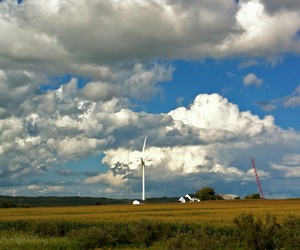Federal Water Tap, August 20: Army Corps Builds Underwater Levee in Mississippi River to Hold Back Salt Water
Last Thursday, the U.S. Army Corps of Engineers started building a levee on the bottom of the Mississippi River, downstream from New Orleans. Because of the drought, water levels in the river are low, allowing a wedge of salt water to push upstream.
The levee, called a sill, will block the wedge, which is denser than freshwater and sinks to the river bottom. The sill, measuring 12 meters (40 feet) at its highest point, will protect the drinking water for several communities, including New Orleans, that pull supplies from the river.
Constructed from dredged river sediment, the sill will run across the entire stream bed. It will not be tall enough to affect shipping lanes. The Army Corps built such sills in 1988 and 1999. It will take 45 days to complete construction, an Army Corps press officer told Circle of Blue, but benefits should be seen in two weeks.
You can track the movement of the wedge here. Upstream, the Army Corps is dredging the Mississippi River near Memphis to keep shipping lanes open.
Superfund Removal
The U.S. Environmental Protection Agency announced that it will remove a landfill used to dispose of toxic industrial waste from the agency’s list of Superfund sites. The Hooker-Hyde Park site near the Niagara River in western New York has been on the list since 1983. Groundwater at the site was contaminated with volatile organic compounds and a form of dioxin also found in Agent Orange, an herbicide used by the U.S. military in the Vietnam War.
EPA Regulations and Electricity
The U.S. Government Accountability Office recommends that federal regulatory agencies for energy develop a joint process for monitoring how the electric power industry responds to a quartet of new EPA regulations. Such coordination, the GAO argues, would help address some concerns about the regulations causing electricity prices to rise.
Great Lakes Cleanup
The EPA and local partners will spend US$57 million on dredging and restoration work that’s still needed before removing parts of the Sheboygan River in Wisconsin from a list of toxic hot spots in the Great Lakes region. Dredging will remove contaminated sediment from two separate locations, and three EPA-funded projects will restore river shorelines. An EPA administrator said the river will be off the toxic watch list by the end of the year.
Read much more about the challenges and opportunities around the Great Lakes in Circle of Blue’s just-published Great Lakes package.
Water Access, Pollution at the Border
A plan signed this month by the U.S and Mexican governments aims to make land and water cleaner for people in 10 U.S. states, 26 tribes and seven Mexican indigenous groups along the countries’ 2,000-mile border. The Border 2020 plan focuses on five areas: water quality and access, air pollution, waste management, emergency response and regulatory compliance.
Federal Water Tap is a weekly digest spotting trends in U.S. government water policy. To get more water news, follow Circle of Blue on Twitter and sign up for our newsletter.
Brett writes about agriculture, energy, infrastructure, and the politics and economics of water in the United States. He also writes the Federal Water Tap, Circle of Blue’s weekly digest of U.S. government water news. He is the winner of two Society of Environmental Journalists reporting awards, one of the top honors in American environmental journalism: first place for explanatory reporting for a series on septic system pollution in the United States(2016) and third place for beat reporting in a small market (2014). He received the Sierra Club’s Distinguished Service Award in 2018. Brett lives in Seattle, where he hikes the mountains and bakes pies. Contact Brett Walton






Leave a Reply
Want to join the discussion?Feel free to contribute!